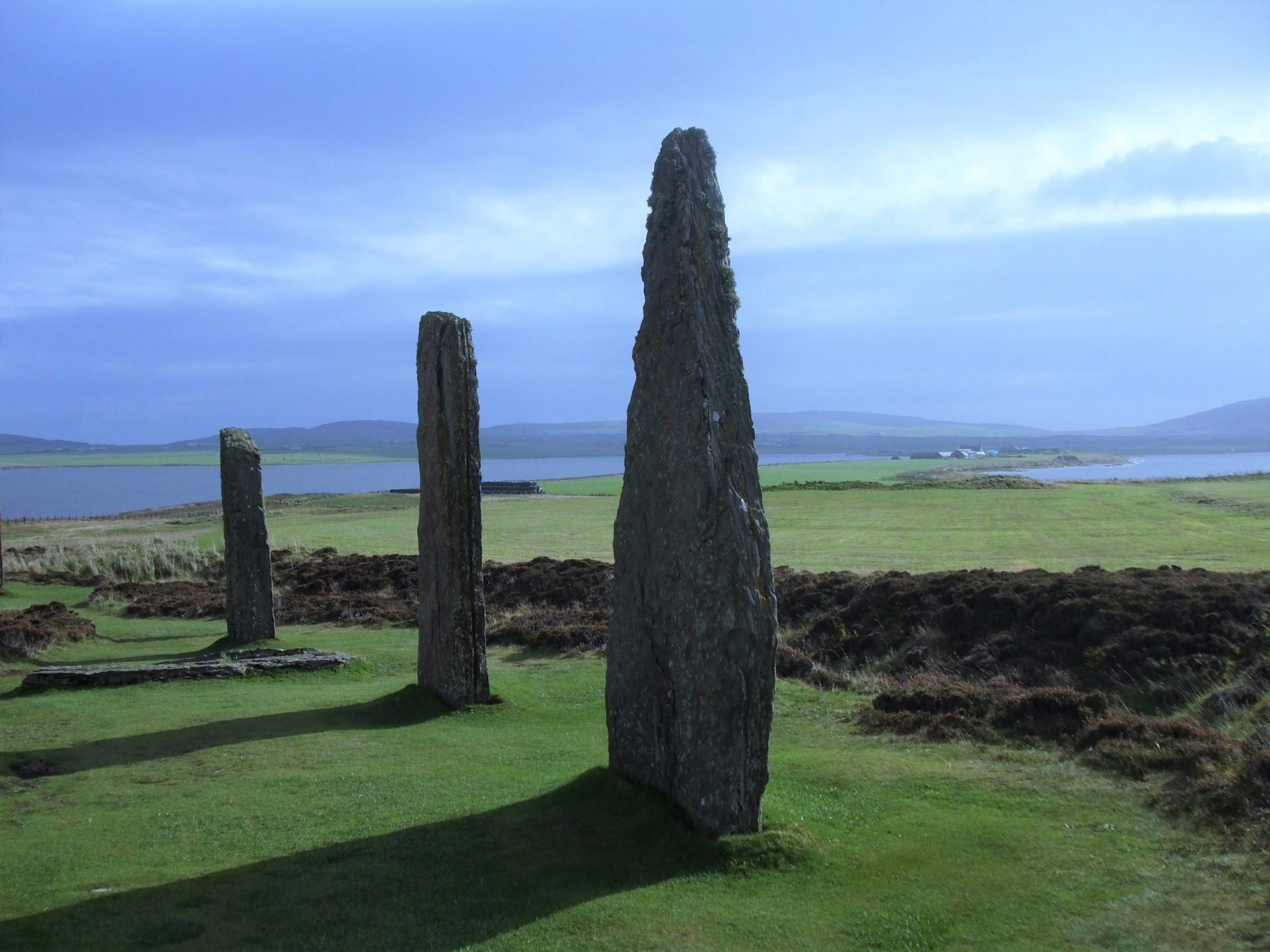Highland Experience Attraction Visits in Neolithic Orkney

When booking our Orkney Tours in 2024 our trips will now include entrance into Skara Brae, Maes Howe, Ring O’Brodgar at no extra cost! Discover the history behind these attractions before booking your next adventure with us.
Skara Brae
Nestled along the rugged coastline of Scotland’s Orkney Islands, Skara Brae stands as a testament to the ingenuity and resilience of our ancient ancestors. Dating back over 5,000 years, this remarkable Neolithic village offers a captivating glimpse into the lives of those who once called it home. Join us on a journey through the mysteries of Skara Brae as we explore its history, architecture, and lasting significance in Scottish history.
The History of Skara Brae
Skara Brae’s story begins in the distant past, during the Neolithic period, around 3,100 BC. It was a time of great change and innovation, as humans transitioned from a nomadic hunter-gatherer lifestyle to settled communities. Remarkably well-preserved, Skara Brae was buried under sand dunes for thousands of years until a fierce storm in the mid-19th century revealed its secrets to the world.
The village consists of several interconnected stone dwellings, each with a central hearth and various compartments for different activities. Archaeological excavations have uncovered fascinating artefacts, including tools, pottery, and even jewellery, shedding light on the daily lives and culture of the village’s inhabitants. The discovery of a remarkable stone dresser, adorned with intricate carvings, hints at a sophisticated level of craftsmanship and artistic expression.
The Significance of Skara Brae in Scottish History
Skara Brae holds immense significance in Scottish history, providing valuable insights into the lives of our ancient ancestors. It offers a unique window into a time when humans were transitioning from a nomadic existence to settled communities, marking a crucial turning point in our development as a species.
Moreover, Skara Brae’s remarkable preservation has allowed archaeologists to piece together a comprehensive picture of Neolithic life. It has provided invaluable information about the daily routines, social structures, and cultural practices of our ancestors. The village’s importance cannot be overstated, as it has significantly contributed to our understanding of prehistoric Scotland and the broader context of human civilisation.
Maes Howe
Maes Howe stands as a testament to the ingenuity and craftsmanship of our ancient ancestors. This Neolithic chambered tomb has enthralled archaeologists, historians, and curious visitors alike for centuries. Its mysterious origins and unique features make it a true marvel of ancient engineering. In this article, we will delve into the fascinating world of Maes Howe, exploring its history, significance, and the legends that surround it.
History and Significance of Maes Howe
Maes Howe was constructed around 2800 BC, during the Neolithic period. It is believed to have been built as a burial chamber for important individuals of the time. The structure consists of a large mound, measuring around 35 meters in diameter and 7 meters in height, with a central passageway leading to a chamber at its core. The entrance passageway is aligned with the setting sun during the winter solstice, allowing a beam of light to illuminate the chamber during this sacred time.
The significance of Maes Howe goes beyond its architectural design. The walls of the chamber are adorned with intricate Viking graffiti, dating back to the 12th century. These carvings tell tales of Viking warriors and their conquests, offering a glimpse into a different era of history. The tomb was also the subject of archaeological excavations in the mid-19th century, which revealed a wealth of artefacts, including human remains, pottery, and tools.
Ring O’Brodgar
Ring O’Brodgar, or known locally as Brodgar Stone Circle, is a captivating archaeological site located in the heart of Scotland’s Orkney Islands. This remarkable stone circle stands as a testament to the ingenuity and skill of the Neolithic people who constructed it over 4,500 years ago. Nestled amidst rolling green hills and overlooking the sparkling waters of the Loch of Harray, Ring O’Brodgar has captured the imagination of historians, archaeologists, and visitors alike, offering a glimpse into an ancient world.
Interesting facts and mysteries surrounding Ring O’Brodgar
Ring O’Brodgar is not only a marvel of ancient engineering but also a site steeped in fascinating facts and intriguing mysteries. One of the most puzzling aspects of the stone circle is its purpose. While many experts believe it served as a ceremonial or ritualistic site, the exact nature of the rituals performed at Ring O’Brodgar remains unknown. The alignment of the stones with celestial events suggests an astronomical function, but further research is needed to confirm this theory.
Another enigma surrounding Ring O’Brodgar is its relationship with other Neolithic sites in the Orkney Islands. The stone circle is part of a larger complex known as the “Heart of Neolithic Orkney,” which includes other ancient sites such as Skara Brae and Maeshowe. The purpose of this interconnected network of sites and their relationship to each other are subjects of ongoing research, providing a fascinating glimpse into the interconnectedness of Neolithic society.
Visiting Ring O’Brodgar is a truly awe-inspiring experience. The sheer scale and beauty of the stone circle, set against the stunning Orkney landscape, leave visitors with a sense of wonder and intrigue. Stepping into the footprints of our ancient ancestors, one cannot help but be transported back in time, imagining the rituals and ceremonies that took place within the circle’s ancient embrace.
Ready to book your next adventure? Get in touch with us today.
